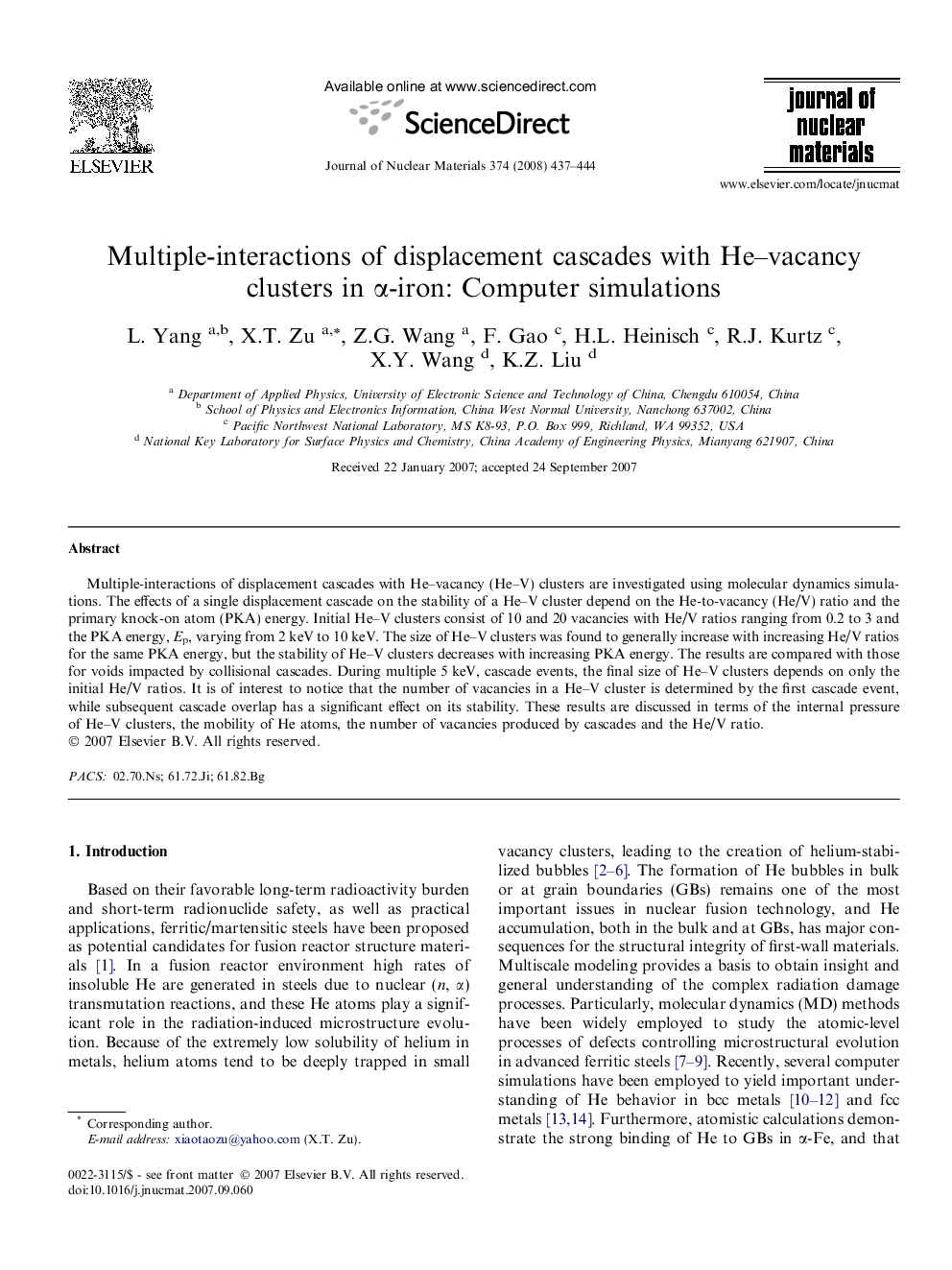| Article ID | Journal | Published Year | Pages | File Type |
|---|---|---|---|---|
| 1568662 | Journal of Nuclear Materials | 2008 | 8 Pages |
Multiple-interactions of displacement cascades with He–vacancy (He–V) clusters are investigated using molecular dynamics simulations. The effects of a single displacement cascade on the stability of a He–V cluster depend on the He-to-vacancy (He/V) ratio and the primary knock-on atom (PKA) energy. Initial He–V clusters consist of 10 and 20 vacancies with He/V ratios ranging from 0.2 to 3 and the PKA energy, Ep, varying from 2 keV to 10 keV. The size of He–V clusters was found to generally increase with increasing He/V ratios for the same PKA energy, but the stability of He–V clusters decreases with increasing PKA energy. The results are compared with those for voids impacted by collisional cascades. During multiple 5 keV, cascade events, the final size of He–V clusters depends on only the initial He/V ratios. It is of interest to notice that the number of vacancies in a He–V cluster is determined by the first cascade event, while subsequent cascade overlap has a significant effect on its stability. These results are discussed in terms of the internal pressure of He–V clusters, the mobility of He atoms, the number of vacancies produced by cascades and the He/V ratio.
